Contemporary Witnesses Recount: Last Stations Before Deportation
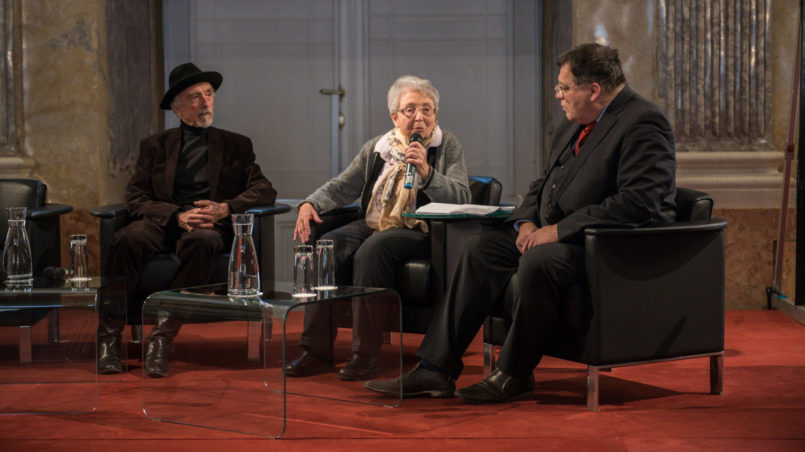
Event data
- Datum
- 24. 1. 2017
- Host
- Österreichische Akademie der Wissenschaften (ÖAW)
- Location
- Festsaal der ÖAW
- Event-type
- Diskussion
- Participants
- Anton Zeilinger, Präsident der Österreichischen Akademie der Wissenschaften
- Doris Bures, Nationalratspräsidentin der Republik Österreich
- Heidemarie Uhl, Historikerin
- Monika Sommer, Kuratorin
- Dieter J. Hecht, Historiker
- Michaela Raggam-Blesch, Historikerin
- Doron Rabinovici, Historiker, Schriftsteller
- Helga Feldner-Busztin, Zeitzeugin, Ärztin
- Arik Brauer, Zeitzeuge, Maler, Grafiker, Bühnenbildner, Sänger, Dichter
- Gerhard Baumgartner, Moderator, Journalist, Historiker
The first part including discussions with historians can be found here.
Through the reports of contemporary witnesses, the situation around the collection points could be investigated and preserved from oblivion for the future. Today Arik Brauer and Helga Feldner-Busztin are here as our guests to describe their experiences. Thus begins a review of the darkest chapter of contemporary history. (Doris Bures)
The interview is conducted by Gerhard Baumgartner.
I welcome Dr. Helga Feldner-Busztin and Prof. Arik Brauer. They were both born in 1929 and come from mixed marriages with one non-Jewish parent.
How did you experience the introduction of the yellow badge on 1.9.1941?
Helga Feldner-Busztin:
Having to wear this was one of the greatest acts of humiliation. You were marginalised, you were marked, people would insult you. It was firmly sewn on and nobody dared to go out without their star.
Arik Brauer:
Of course, you never forget something like that. In my Aryan Certificate, it said: Jew. I had the star, but I did not sew it on, it was only attached with press studs and I often took it off. I did not look very Jewish and spoke with a broad Ottakring dialect, which was helpful.
Prof. Brauer, we know you as the founder of Fantastic Realism, but also as a stage designer, as a singer, as an artist. What was your life like at that time?
Arik Brauer:
At the time, I worked in the technical department of the “Council of Elders of the Jews in Vienna.” Jewish institutions existed until 1945, after all. There was the retirement home, the children’s home, the Jewish cemetery, the Rothschild hospital, a children’s hospital, another Jewish hospital.
I was in the carpentry workshop of this Council of Elders, where a substantial part of the dirty work was done. I worked in this workshop for three years.
Officially, we provided technical support to all these institutions. In fact, we mostly created luxury furniture for the Gestapo.
But we also looked after the camps, I worked in the Malzgasse for many weeks. Many Jews came, the cellar had to be cleared and for days I had to carry the many heavy doors up to the attic. I was completely exhausted; then I ran into a former school friend from the Jewish school who helped me, otherwise I would probably not have managed.
I asked this friend – the love of my youth: “Why don’t you flee?” The doors were, after all, open, it was not a prison. She said, “My parents and siblings are here, where should I go?” I wanted to help her, I still had non-Jewish relatives with allotments. She said she wanted to talk to her parents and give me the answer the next day. But the next day she was no longer there.
Dr. Feldner-Busztin, when did you come to the collection point and how did you experience it?
Helga Feldner-Busztin:
According to the Nuremberg Laws, until the age of 14 children had the status of their mother. My mother was of mixed race and her living Aryan father was an old Austrian officer who had attended the officers’ academy together with Kaltenbrunner. He then went to see Kaltenbrunner, who, displaying a trace of solidarity between officers, told him that his daughter would not be harmed. But he did not include her children, and I turned 14 in February 1943.
When I was 14, we came to the collecting point in Malzgasse. My sister had scarlet fever at the time and was in the hospital for infectious diseases. With the protection of my grandfather, we could wait out the quarantine period and I was placed in the children’s home at Mohapelgasse (today: Tempelgasse). My father was a doctor and knew the head physician, who took my mother out of the camp and found a place for her in the hospital. So I only knew this collection point superficially.
You were subsequently deported with your mother, weren’t you?
Helga Feldner-Busztin:
Yes, we then waited for the next transport and left. We were hardly guarded, we were handled by Jews upon arrival, were deloused and examined, but we did get our luggage. And after all, this was, so to speak, a showcase camp.
We were not given anything to eat and there were bedbugs and straw bags … but it was administered by Jews themselves and there was no direct contact with the SS.
Your father survived several concentration camps?
Helga Feldner-Busztin:
My father was a police physician. He was arrested in October 1943 and remained in Buchenwald until July, where he met a large part of the later government, and then had to leave immediately. We had a ship ticket to Shanghai. He went to Genoa, and then we realised that there was no such ship. He stayed in Italy and built up a humble existence there, with the help of the local Jewish communities.
Then the Italians started taking Jews to collection points, but it was not like those around here; it was in a castle, and the first thing the Germans did when they got there was to take the Jews from there to Auschwitz. There my father remained for a very long time, from April to January.
Prof. Brauer, how did you experience liberation after having been an outsider for so long? Can you remember this feeling?
Arik Brauer:
At the last moment, in winter of 1945, the carpentry workshop closed and I was also found: a Jew came and took me to Castellezgasse.
There, a mediator took my identity card from me and told me to prepare myself for transport. But I did not stay there, I drove out and disappeared, hiding in an allotment garden where I experienced the liberation.
I heard the shots being fired by the Russian army as they were coming down from the Vienna Woods, crossing the Flötzersteig. Of course, I immediately went out, and the Russians arrived. My father was a Russian, and I knew five or six words in Russian. I sprang down the Flötzersteig beside the tank and sang Russian songs in jubilation.
I felt as if I had just been born right then and there. You cannot imagine this, the difference between freedom and oppression. I mean, there was the whole misery, the post-war hardship – yet for me it was paradise. I danced through a city stinking of corpses.
Frau Doctor, where did you experience the liberation, and was that similarly euphoric?
Helga Feldner-Busztin:
I was also on a list to be transported to Auschwitz at some point. The first time I was alone, in the autumn of 1944. It took a long time, and I lay down for a while. When I woke up, the transport was gone, and they said, “You’ll just go with the next one.”
The next time my mother volunteered, but they did not accept her, and so I did the same on purpose.
And the third time I was working in the agricultural sector in Theresienstadt. This was outside the camp, and I was exempted because they had no more workers.
And on May 7, 1945, we went to a field, into a greenhouse plot. All of a sudden there were mounds of earth everywhere and bayonets and caps with a Soviet star emerged from these mounds. We saw the Soviet stars, they saw our yellow stars, and so they came down and fed us and were very nice – no one was raped.
This liberation was something that is indescribable: to suddenly take off the yellow star and no longer be an outsider.
We even found my father again. One cannot imagine what he was like after Auschwitz, but he regained a certain zest for life, and we were free.
To come back to you again, Professor: What is it like – you described this in such a euphoric manner, but then one realises that relatives and friends are gone. How does one deal with these mixed feelings?
Arik Brauer:
I was 16 years old, I had no childhood in a palace that was stolen from me. Of course, I also suffered from a lack of food and clothing; but this disappointment experienced by those who wanted to have their property returned and did not get it, I went through none of that.
My mother did her best to get something from the workshop of my father – who had been gassed in Riga – but it had been expropriated in the Night of the Broken Glass. I couldn’t care less that we got nothing. I looked to the future, and now everything was going to be all right anyway because now the classless society would come and nothing bad could happen to us. So I was naive and stupid enough to cope with all this fantastically.
For years I dreamed of my father, of course, and I also had nightmares, I was already familiar with these. And in my memory, the dreams are also intermingled with experiences; for some memories I cannot say whether this really happened or whether I dreamed it.
And if you go through the town today, e.g. at Morzinplatz or in the 2nd district, does it come back to you again?
Arik Brauer:
No, I remember a lot of things very well. But it’s almost like it happened to someone else, because I’ve changed so much, and I know the stories. It’s as if a different person experienced it.
In Tempelgasse (at that time: Mohapelgasse) I knew this girl. She could hardly speak and was considered “dumb,” but in reality she was autistic. She had a black recorder, but could not play it. I showed her how to play it and very quickly noticed how amazingly gifted she was. When she went away – she could hardly talk, but she knew what was in store for her – she gave me her recorder. I still have that today.
Helga Feldner-Busztin:
That is already 75 years ago now, I have gotten over it totally, I have experienced so much since then.
I have not forgotten, but it does not affect me emotionally as strongly as before.
Knowing how many of the perpetrators still lived in Vienna for a long time, did that touch you, was it an issue?
Helga Feldner-Busztin:
Oh yes, especially at the beginning, I was full of hatred, because even after it was over, it’s not like there was a welcome committee, it was quite an effort to fit in. But then I realised that the others had also suffered losses: the father fallen, the brother a prisoner of war, the family bombed, etc.
The question of apartments was by no means an easy one. The first apartment we got, we shared with a Nazi, it was an aryanized apartment.
Over the years I had always had to be better than the others to show them that I was not a sub-human. I was incredibly ambitious, and that was a motive.
Prof. Brauer, you then went away from Austria. What made you decide to come back again?
Arik Brauer:
I never left out of disappointment or hatred for Austria.
I learned very soon in my life that mankind is not made up of bundles of people, but of individuals. If people did not have this tendency to classify people – “the Jews”, “the Arabs”, “the Austrians” – it wouldn’t even be possible to wage war.
This is, of course, very difficult, and not everyone wants to understand people as individuals.
I travelled to Israel to get to know it, and I stayed there for my whole life. For many years I lived in Paris, but the reason for this was that a painter simply has go to Paris to gain recognition in the world of art.
Helga Feldner-Busztin:
I wholly agree with him there. But it takes some maturity to see that you have to judge people individually.
That is why I go to schools and talk to pupils so that they don’t say “the refugees”, “the Arabs”, “the Jews”, but understand that everyone deserves a chance. And if I can teach them this, much is achieved.
The preservation of these memories is one of the the chosen tasks of the Academy of Sciences, so that future generations cannot only access facts, but also emotions, on this difficult but enormously important issue of our country. And to make sure that nothing similar ever happens again.
Translation German-English: Serena Nebo

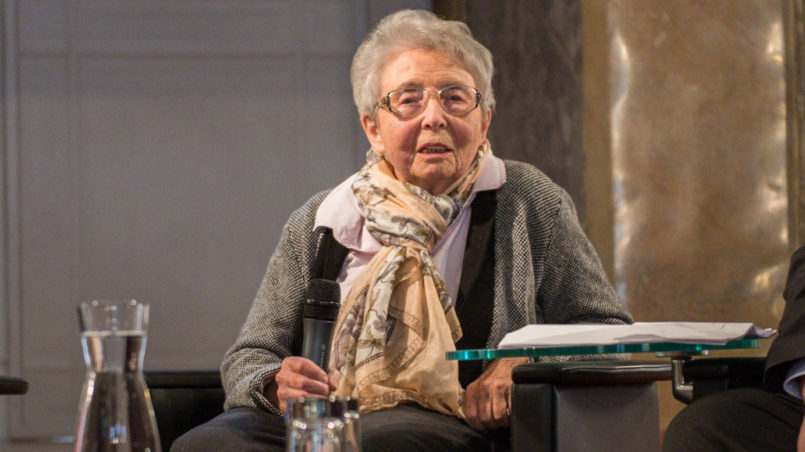
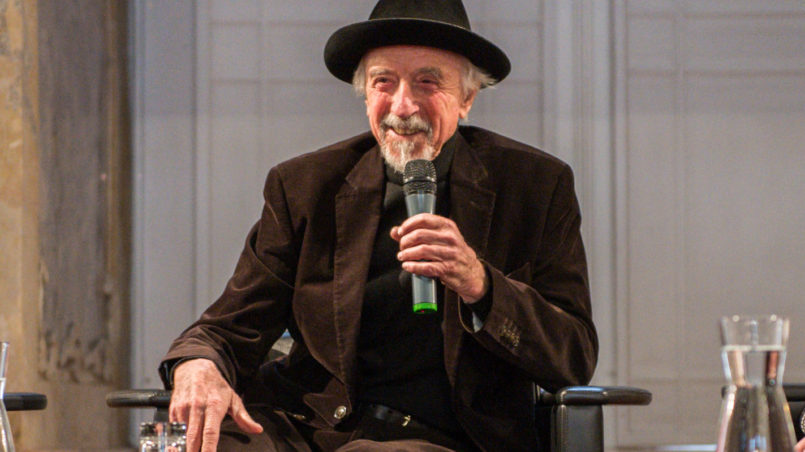
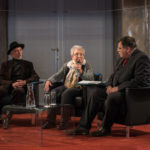
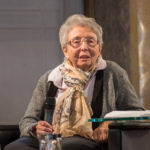
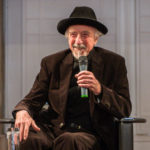
[…] For the second part with reports from contemporary witnesses, follow this link. […]